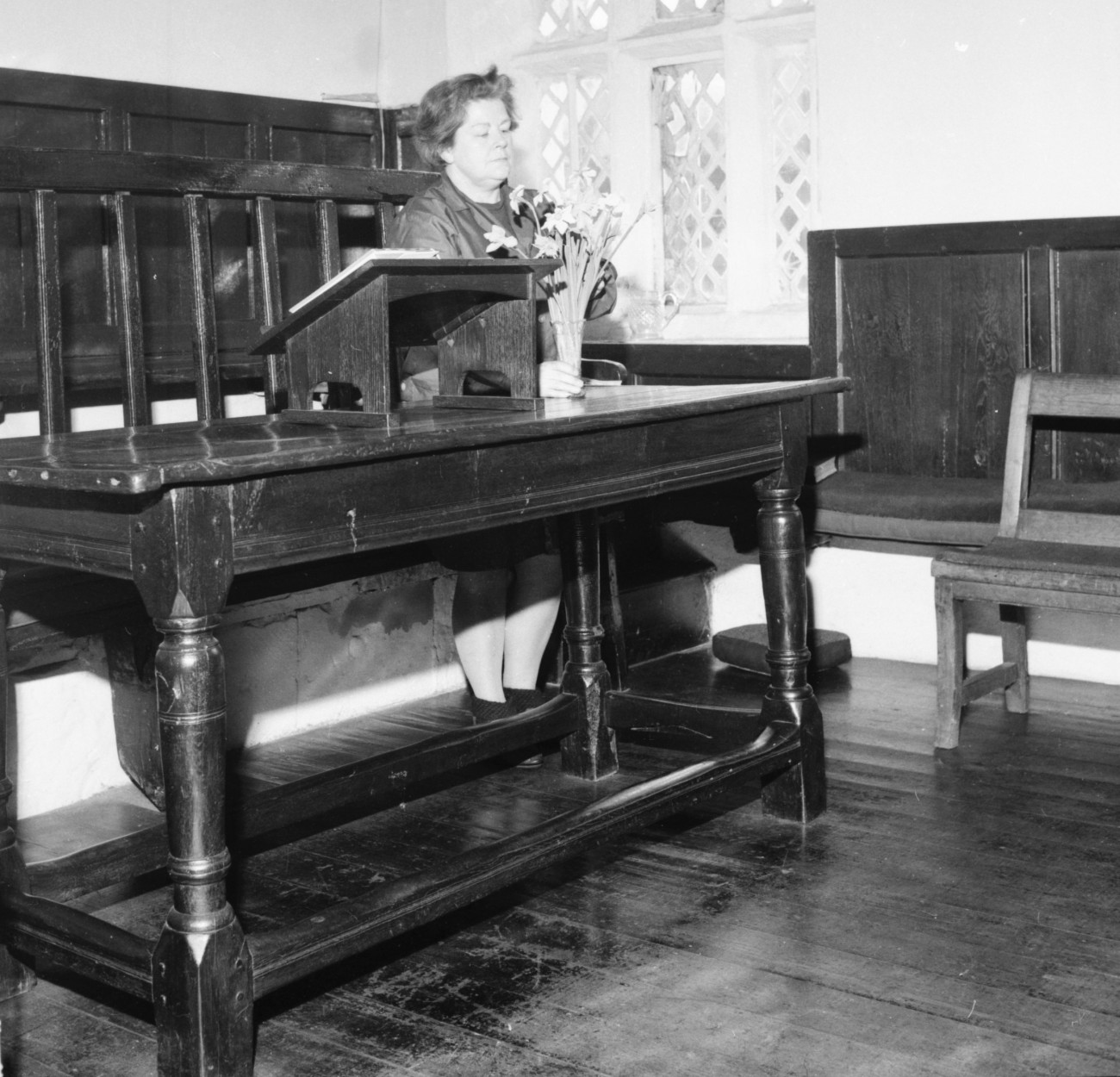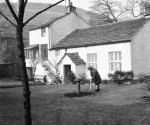Friends' History Not For Sale
23 Feb 1971
Friends' Meeting House, 13 Co-Operation Street, Crawshawbooth
Media Ref: BE71ng47066_a
The caretaker arranging flowers on the Jacobean table, the history of which has been lost in time.
From a story by Dave Ayrton, pictures by Mark Lewis:
An American visitor to North-East Lancashire has offered to buy much of the antique and historic furniture at the Friends' Meeting House in Crawshawbooth. Of course the offer has not been accepted or even seriously considered. The meeting house, which is just off the Burnley Road has a stone-slated roof and whitewashed walls. Standing at the foot of a steep hill, it makes a pretty picture. It also has a fascinating history. It was in 1715 that Quakers in the area considered it necessary to have a meeting house as a place for worship. It was a small building only half the size of the present one, which was incorporated 20 years later. Before this time, however, the land around was being used as a burial place, the first burial taking place there in 1728.
A special feature inside are the hanging shutters which divide the large room from the ante-room. These are of pine wood, but painted and grained to look like oak. The building itself is of local stone probably obtained from the quarries a short distance away. It retains its original fittings which are of black oak. The dais for the ministers and elders has in front of it a railing of hewn oak and at one end a small book cupboard which still has its original oak doors. The forms and seatings are all of hewn oak black with age. Light is obtained through mullioned windows. An interesting and unusual feature is the 17th Century refectory table - a century older than the house itself. Now as black as ebony and worn and polished by usage of 300 years, the table is something of a mystery as no one knows where it came from. There is also an oak chair, not quite as old as the table, but which is said to have been used by John Bright. There is also an old tradition that the chair belonged to George Fox. It is certainly old enough to have been used by him and there seems to have been a strong possibility that it came to the meetinghouse because of its associations with the founder of Quakerism. For more than 200 years Friends have held their meetings in this place. But although the early Quakers went to America, these objects of local historical value are certainly going to remain at Crawshawbooth.






